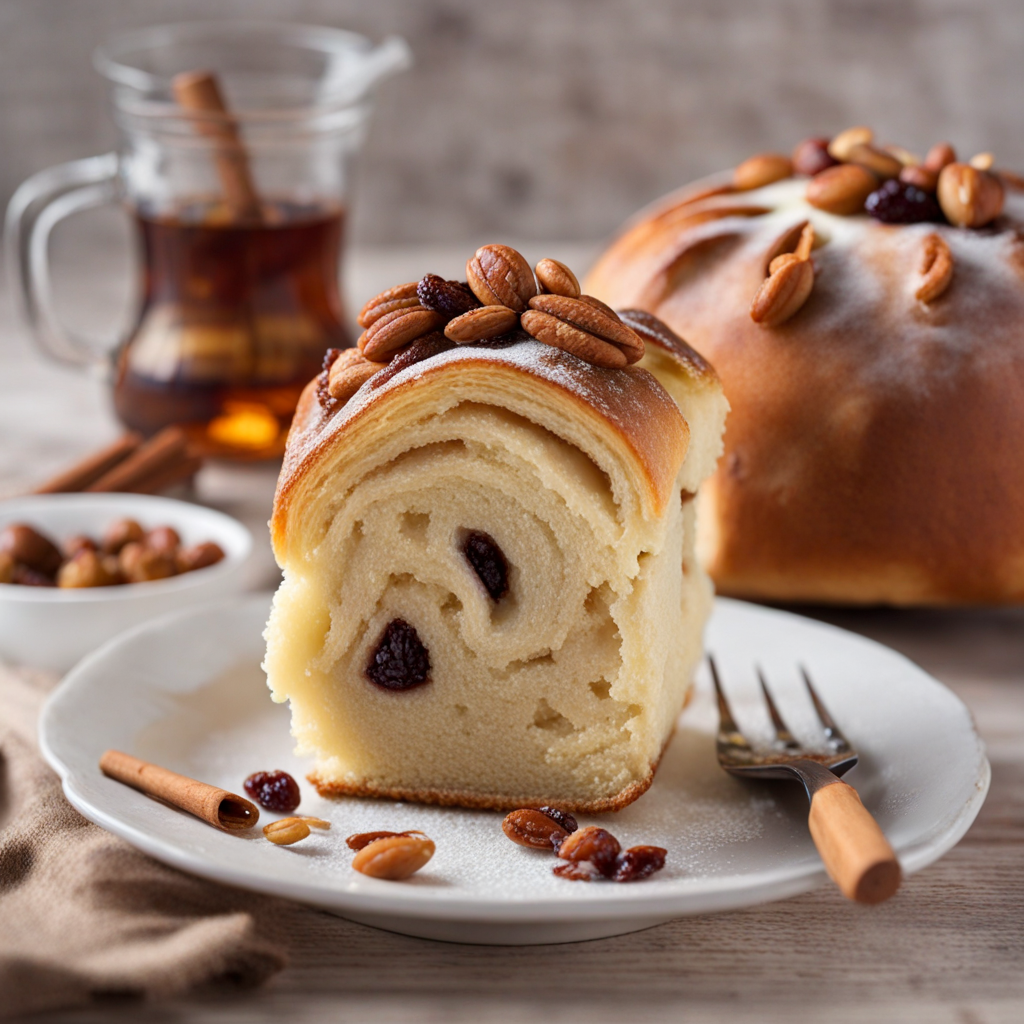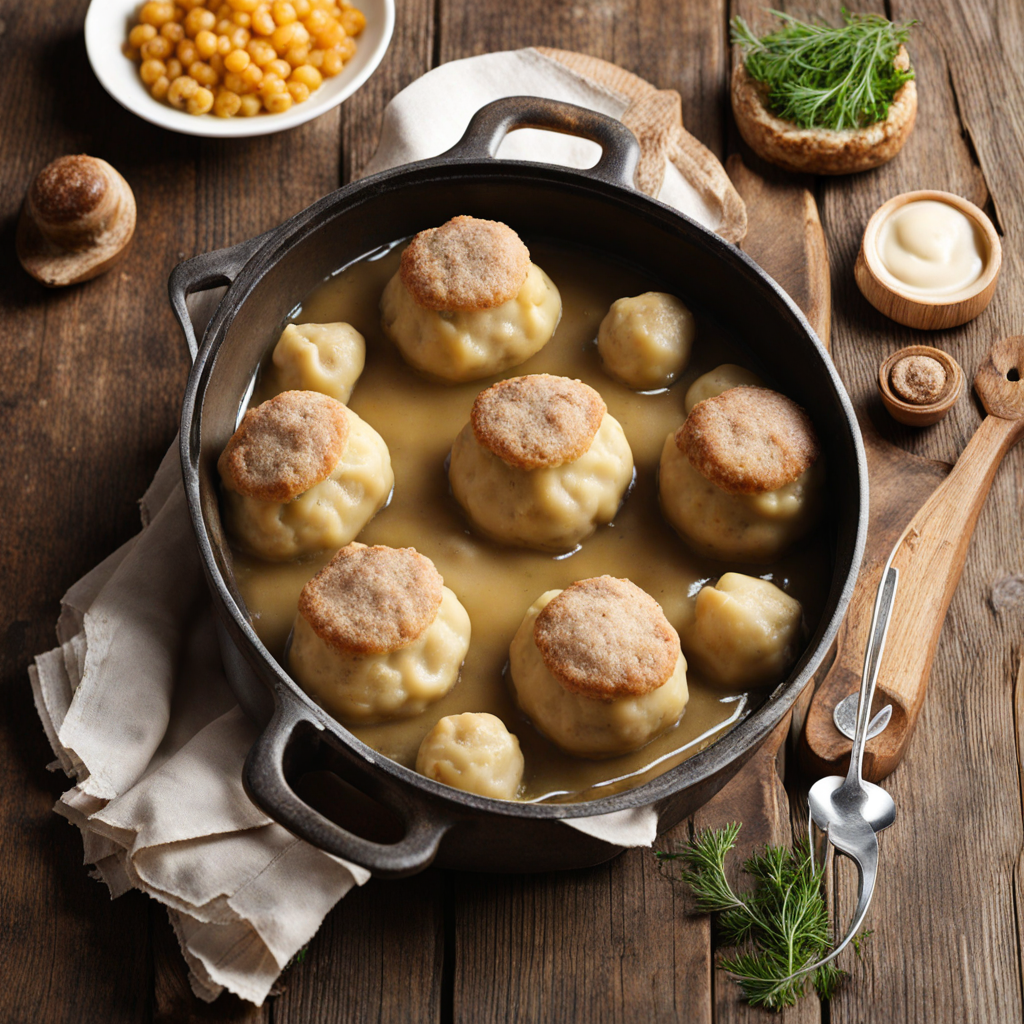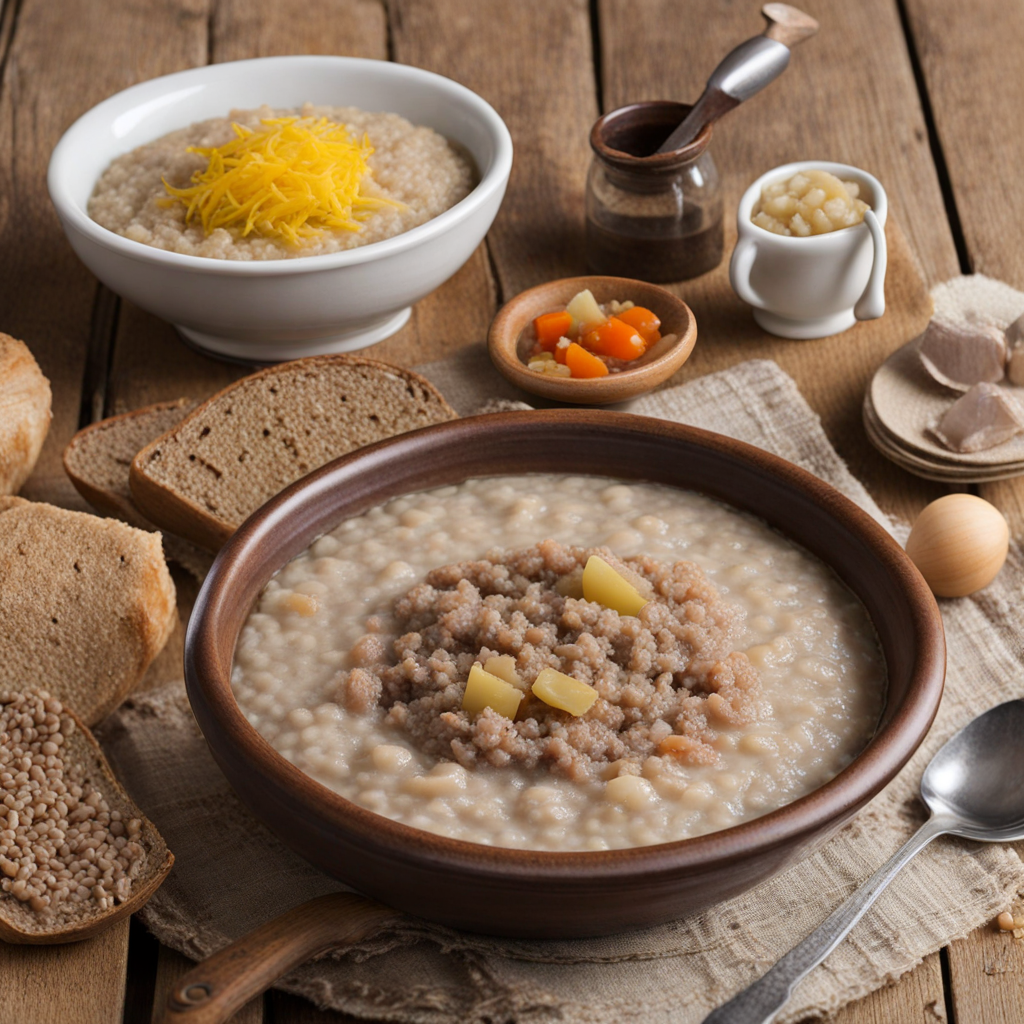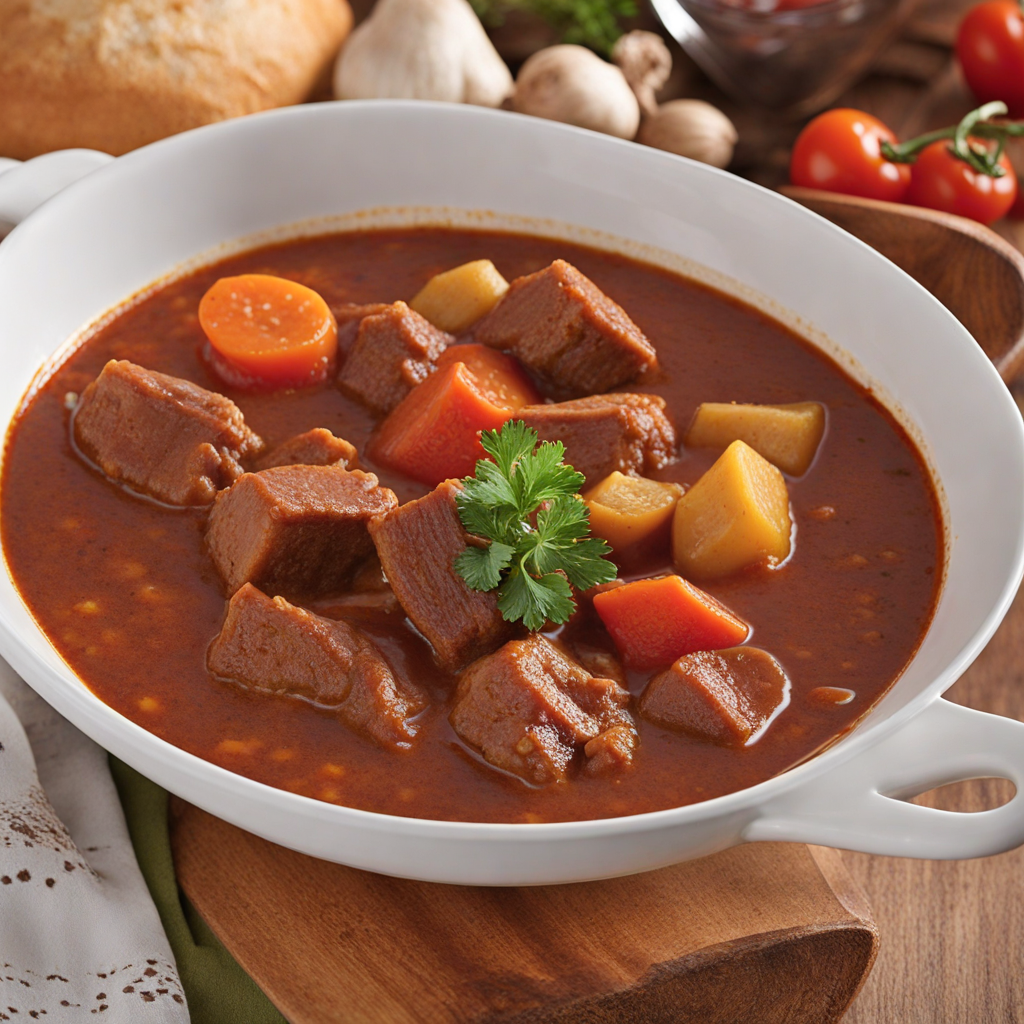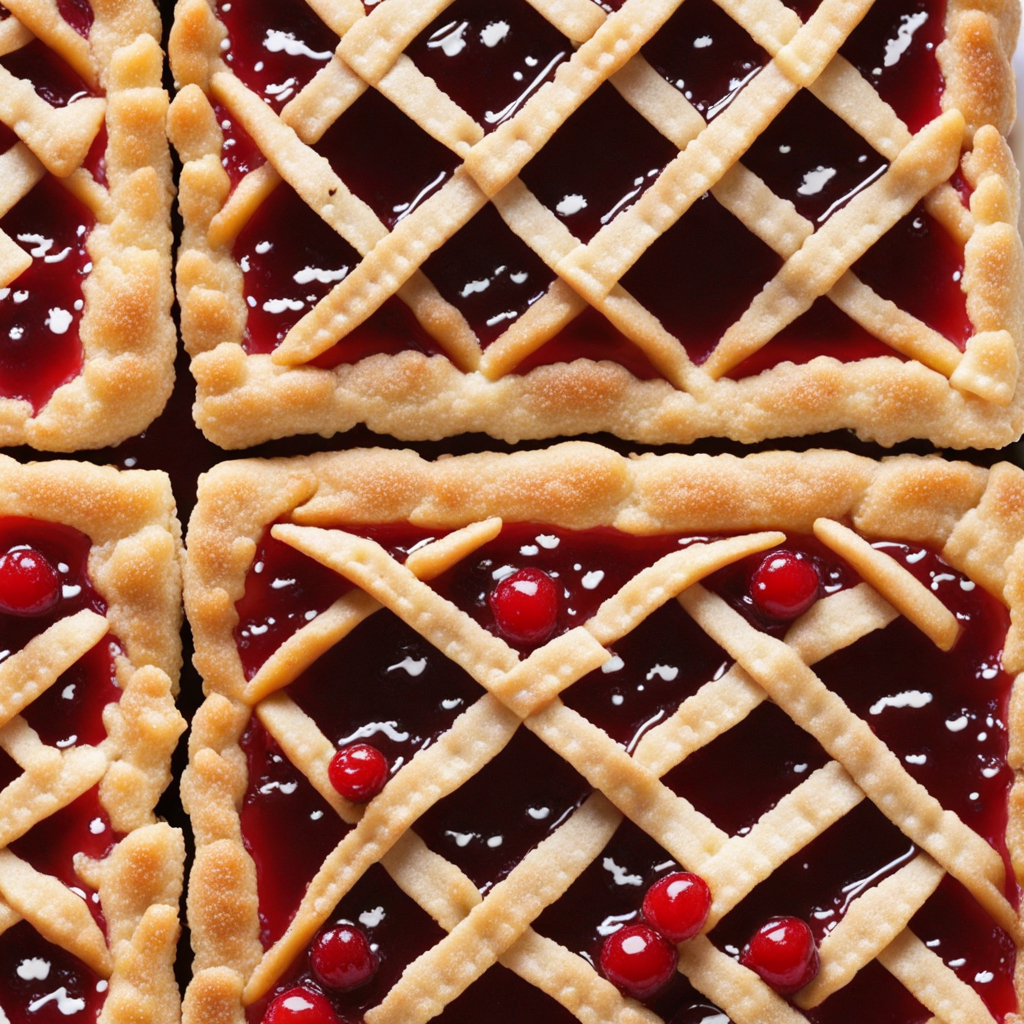Reindling
Reindling is a traditional Austrian cake that hails from the picturesque region of Styria. This delightful treat is characterized by its unique cylindrical shape, which is typically baked in a round cake pan, known as a 'Reindl.' The cake is made from a rich yeast dough that is generously infused with aromatic spices such as cinnamon and nutmeg, lending it a warm, inviting fragrance. The dough is often layered with a mixture of finely chopped nuts, sugar, and raisins, which create a delectable filling that enhances the cake's texture and flavor profile. The combination of these ingredients results in a sweet, soft cake that is both comforting and indulgent. Once baked, Reindling develops a beautifully golden-brown crust that contrasts perfectly with its soft, moist interior. The cake is typically served in thick slices, revealing its intricate swirls of filling that are reminiscent of a cinnamon roll. Each bite offers a harmonious blend of flavors, with the sweetness of the sugar and raisins balanced by the earthy notes of the nuts. Often enjoyed with a cup of coffee or tea, Reindling makes for an exquisite dessert or a delightful addition to a festive gathering, embodying the warmth and hospitality of Austrian culture. Reindling is not just a treat for the taste buds; it is also steeped in tradition and often associated with local celebrations. Many families have their own recipes passed down through generations, making each version of Reindling unique. The cake's rich history and the care that goes into its preparation make it more than just a dessert; it serves as a connection to Austrian heritage and a celebration of togetherness. For those looking to explore new culinary horizons, Reindling offers a taste of Austria that is both familiar and distinct, inviting you to savor the moments spent around the table.
How It Became This Dish
The History of Reindling: Austria's Sweet Tradition #### Origins Reindling is a traditional Austrian cake, particularly associated with the regions of Styria and Carinthia, and is often enjoyed during festive occasions, especially around Easter and Christmas. Its origins can be traced back to the rural communities of Austria, where local ingredients and culinary practices shaped the creation of this distinctive sweet bread. The name "Reindling" is derived from the German word "Reindl," which means "pot" or "pan," referring to the round baking dish traditionally used to make this cake. This vessel is crucial, as the shape of the Reindling not only defines its appearance but also influences its texture and flavor. The use of a specific type of pan imbues the cake with a unique character that is cherished by local bakers and families alike. Historically, Reindling was made by farmers and their families as a way to utilize surplus ingredients. The base of the cake consists of a rich yeast dough, which is rolled out and filled with a mixture of sugar, nuts, and spices, often cinnamon, and sometimes raisins or sultanas. This filling reflects the agricultural bounty of the region, showcasing the importance of seasonal ingredients in Austrian cuisine. #### Cultural Significance Reindling holds a special place in Austrian culinary culture, transcending mere sustenance to embody tradition and family heritage. It is often baked during significant life events, such as weddings, baptisms, and holidays. In the Austrian community, baking Reindling is not just about creating a delicious treat; it is a ritual that brings families together, fostering bonds across generations. In many households, the recipe for Reindling is passed down from grandmother to mother, and then to daughters, creating a lineage of flavors and memories. Each family often has its own version, influenced by personal tastes and regional variations. This customization has cultivated a sense of pride in one’s heritage and culinary skills, as families gather to bake and share their unique interpretations of this beloved cake. The cake is often served alongside coffee or tea, particularly during festive gatherings and celebrations. It is customary to enjoy Reindling with loved ones, reflecting the communal spirit that is deeply ingrained in Austrian culture. The act of sharing food is an integral part of social life in Austria, and Reindling serves as a delicious vehicle for fostering connection and joy. #### Development Over Time The evolution of Reindling can be seen through its adaptations over the years. While the traditional recipe remains a staple, modern interpretations have emerged, incorporating contemporary tastes and dietary preferences. With the rise of artisanal baking and a broader interest in local and organic ingredients, many bakers have begun experimenting with alternative flours, natural sweeteners, and various fillings. For instance, some bakers have introduced gluten-free versions of Reindling, catering to dietary restrictions without sacrificing the beloved flavor and texture of the original. In recent years, the use of innovative ingredients such as chocolate, dried fruits, and even savory elements has gained popularity, reflecting a growing trend in Austrian gastronomy towards diversity and experimentation. Additionally, the traditional methods of making Reindling are being revitalized, with a renewed emphasis on slow fermentation and artisanal techniques. Many bakers are returning to the roots of sourdough fermentation, allowing the dough to develop complex flavors over time. This has resulted in a richer, more nuanced cake that honors the heritage of Reindling while appealing to modern palates. In contemporary Austria, Reindling has found its way into popular culinary events and festivals, where bakers showcase their skills and creativity. Competitions centered around Reindling have emerged, highlighting the cake’s status as a cultural icon. These events not only celebrate the craft of baking but also reinforce the community bonds that are essential to Austrian culture. #### Reindling in Popular Culture As with many traditional foods, Reindling has also made its mark in popular culture. It appears in cookbooks, television shows, and food blogs, often presented as a nostalgic symbol of Austrian heritage. Chefs and home bakers alike are keen to share their versions of Reindling, bringing attention to its historical significance and encouraging a new generation to embrace this traditional treat. Furthermore, the growing interest in regional cuisines has led to a broader appreciation of foods like Reindling beyond Austria’s borders. International food enthusiasts are discovering the cake, often seeking out authentic recipes or traveling to Austria to experience it firsthand. This globalization of culinary traditions has allowed Reindling to transcend its regional roots, introducing it to a wider audience who can now enjoy its sweet, spiced flavors. #### Conclusion In summary, Reindling is more than just a sweet cake; it is a testament to Austria's rich culinary heritage and the importance of community and family. Its evolution over time—from a rustic farmer's bread to a beloved festive treat—reflects the adaptability and creativity of Austrian bakers who continue to honor age-old traditions while embracing contemporary trends. As it occupies a cherished space in the hearts and homes of many Austrians, Reindling serves as a delicious reminder of the importance of food in bridging generations and cultivating a sense of belonging. Whether enjoyed in a cozy family gathering, a festive celebration, or a modern café, Reindling remains a beloved symbol of Austrian culture, inviting all who taste it to partake in its sweet legacy.
You may like
Discover local flavors from Austria



